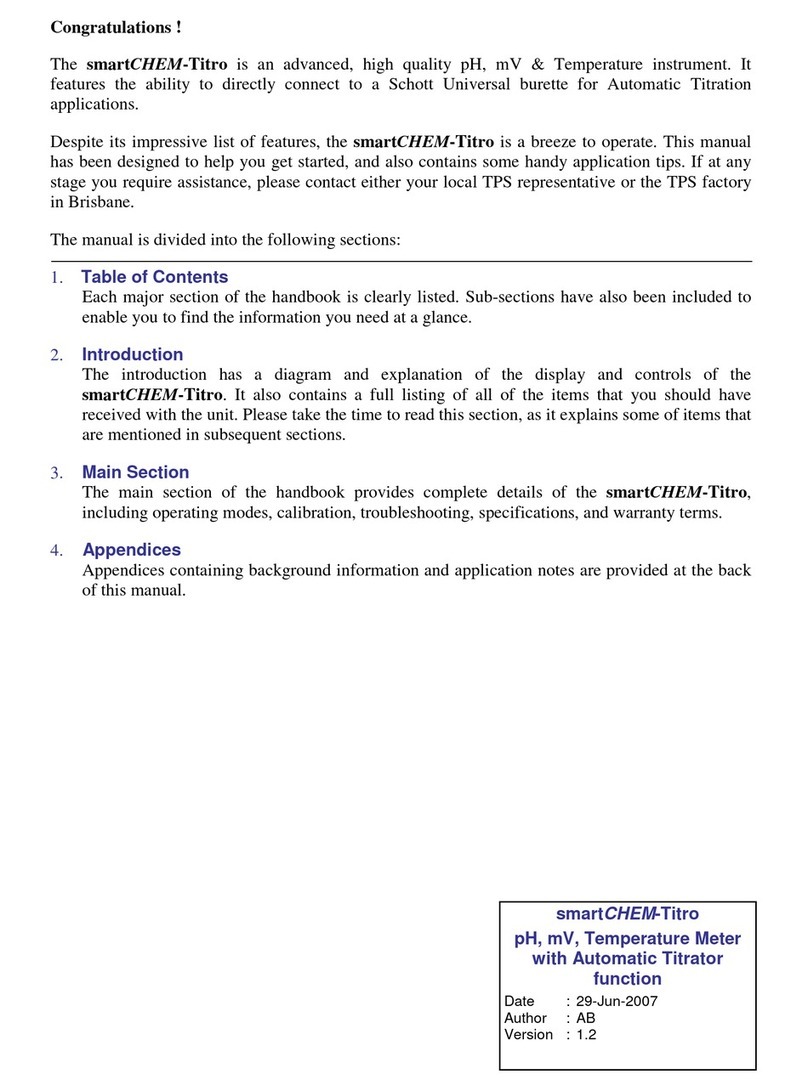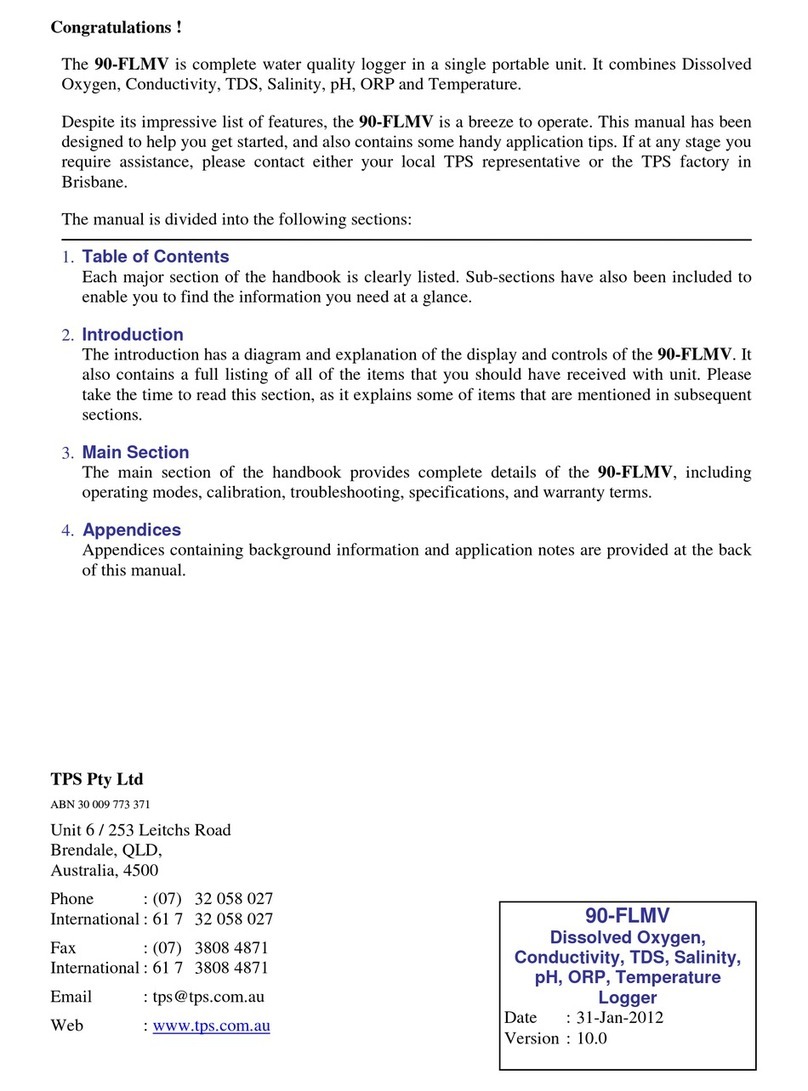
Page 1
Contents
1. Introduction..................................................................................................2
1.1 pH Cube Front Panel and Controls........................................................................2
1.2 pH Cube Side Panel and Connectors .....................................................................3
1.3 Unpacking Information..........................................................................................4
1.4 Specifications.........................................................................................................4
2. Operating Modes..........................................................................................5
3. pH Calibration...............................................................................................6
3.1 Calibration Procedure ............................................................................................6
3.2 Calibration Notes...................................................................................................7
4. mV Calibration..............................................................................................7
5. Temperature Calibration .............................................................................8
5.1 Calibration Procedure ............................................................................................8
5.2 Calibration Notes...................................................................................................8
5.3 Manual Temperature Setting..................................................................................8
6. Troubleshooting...........................................................................................9
6.1 pH and mV Troubleshooting .................................................................................9
6.2 Temperature Troubleshooting..............................................................................10
7. Appendices.................................................................................................11
7.1 pH Buffer Values Vs Temperature......................................................................11
7.2 pH Sensor Fundamentals .....................................................................................12
7.3 Checking the reference junction of a pH sensor. .................................................14
7.4 Determining if an instrument or sensor is faulty..................................................15
8. Warranty......................................................................................................16






























